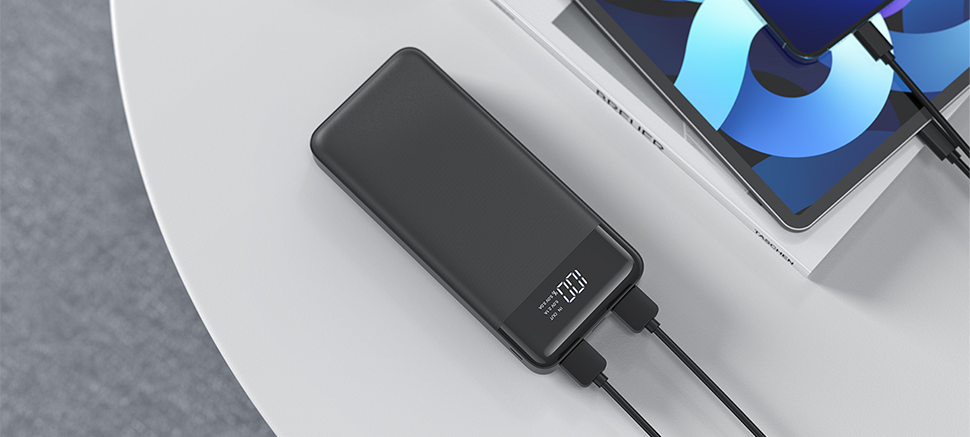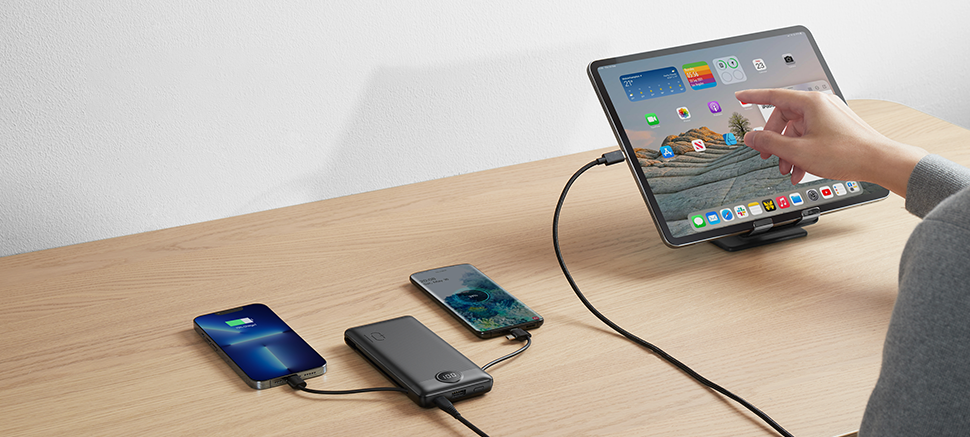Shopping for a power bank can, quite frankly, get a little overwhelming.
While it seems simple at first, you may start to find yourself swamped by facts and figures. Stats like 10,000mAh, voltage, conversion loss, and type-C charge connections, and the list goes on.
It can all get a little much.
But, if you want a power bank that’s up to standard and will do what you want it to, these are stats you need to understand. With this in mind, today we’re focusing on the two most confusing stats;
PD 3.0 and QC 3.0.
Let’s get into it.
What are PD 3.0 and QC 3.0?
Both PD and QC are modern charging technologies that are significantly faster than USB. PD is an official USB technology (designed and maintained by the USB Implements Forum) and can be supported by any device or technology manufacturer.
PD itself stands for ‘power delivery’. This charging tech supports energy transfers of up to 100W and is the USB standard universally found in both smartphones and laptops. This is due to the tech being open sourced and manufacturers don’t need to pay a licensing fee.
On the other hand, QC stands for ‘quick charge’ and is developed by tech giant Qualcomm. This means that licensing is needed to use this charging technology, so you’ll only find it on a range of devices that have paid to use it.
However, as the name suggests, QC offers significantly faster-charging speeds than USB and PD and optimizes charging performance, no matter what device you use.
For example, if your device requires an unusual 17 volts, the QC charger will match the results, whereas a 12-volt charger would under-deliver.
QC charging ports also come with other advantages, such as preventing the risk of overheating while charging, minimizing the loss of excess energy, and avoiding general wastage.
As a rule of thumb, QC charging is around 40% faster than any other type of charger.
Which One is Best for You?
This is where things get interesting.
Most smartphone devices these days will come with PD charging because it’s universal and doesn’t require a license. When shopping for a power bank, you’ll need one that’s capable of offering PD charging, which should be all of them.
However, if you’re using a QC charger device, you should consider getting yourself a QC-compatible power bank. You can technically still use a PD power bank, but you won’t be able to enjoy the lightning-fast charging speeds that they’re capable of offering.
You might think about getting a QC charger for your PD device, but that just doesn’t work. Instead, you’ll just get the default PD charging speeds.
So, to answer which technology is best really depends on your device. QC is best for the best charging experience because it will match whatever voltage your device needs, but only a few Android devices currently use this tech.
On the other hand, PD charging is standard across all Apple and Android devices and is used in laptops and other high-wattage devices up to 100 watts. However, remember that not all PD chargers are equal, and some will give a better charging performance than others.
Or, you could not worry at all together and get yourself a Veger charging power bank.
Many of Veger’s power banks, especially the massive 50,000mAh Tank Lite, support both QC and PD charging, so it really doesn’t matter what devices you’re charging or what wattage you need, you’ll have a power bank that gives the best performance.
So, it doesn’t matter what the difference is; you know you’re giving your device everything it needs to get juiced up and keep going for longer, whatever you’re up to in life!




Dejar un comentario
Todos los comentarios se revisan antes de su publicación.
Este sitio está protegido por hCaptcha y se aplican la Política de privacidad de hCaptcha y los Términos del servicio.